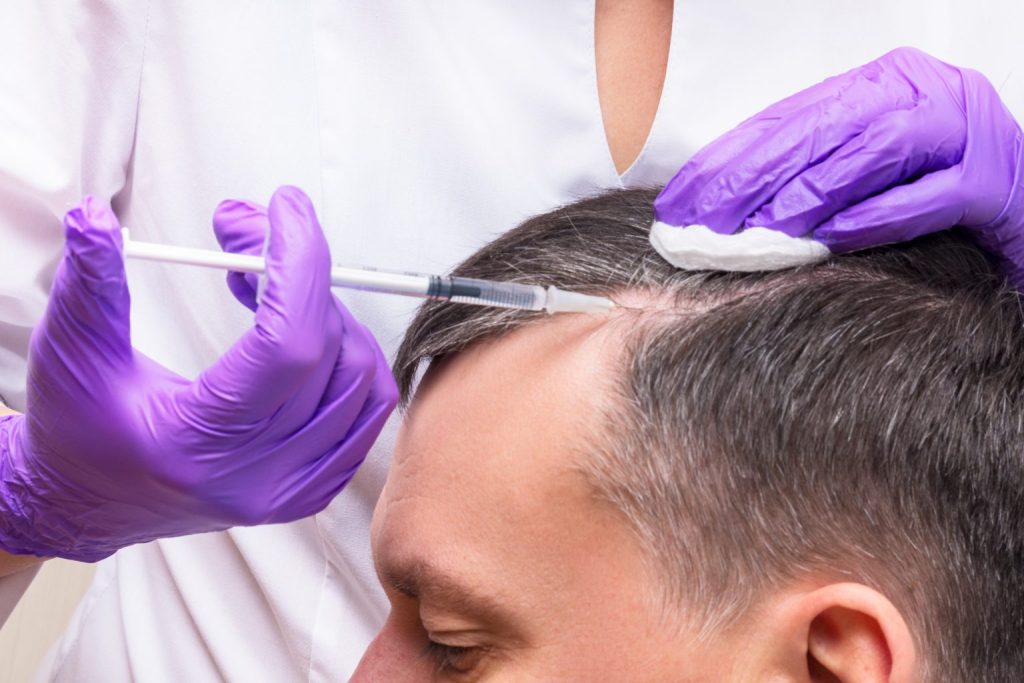
The field of hair restoration has seen remarkable advancements in 2025, making hair loss a reversible and manageable condition rather than a permanent concern. Breakthroughs in biotechnology, artificial intelligence, and regenerative medicine have paved the way for innovative solutions that offer faster, more effective, and long-lasting results. Among these, hair PRP has remained a sought-after treatment, though it is now being integrated with next-generation techniques that amplify its effectiveness. From robotic-assisted transplants to stem cell therapies and bioengineered hair follicles, the landscape of hair restoration has undergone a transformation like never before.
Artificial Intelligence in Hair Restoration
Artificial intelligence (AI) has revolutionized multiple industries, and hair restoration is no exception. AI-powered diagnostic tools now provide precise scalp analysis, identifying the root causes of hair loss with unparalleled accuracy. By analyzing scalp health, hair density, and genetic predispositions, AI helps dermatologists and specialists create customized treatment plans tailored to individual patients. Moreover, AI is used in robotic follicular unit extraction (FUE), where machine learning algorithms assist in selecting the healthiest grafts, improving implantation precision, and minimizing the risk of human error. This level of precision leads to higher success rates and natural-looking results, making AI one of the most transformative technologies in hair restoration today.
Stem Cell Therapy for Regenerative Hair Growth
Stem cell therapy has emerged as a revolutionary approach to combating hair loss, utilizing the body’s natural regenerative abilities to stimulate hair growth. In 2025, advancements in stem cell research have enabled scientists to extract and cultivate hair follicle stem cells, which can be injected into the scalp to regenerate dormant follicles. Unlike traditional treatments, stem cell therapy offers long-lasting results by restoring the natural growth cycle of hair. This cutting-edge technology has shown promising outcomes for individuals suffering from androgenetic alopecia and other forms of hair loss, providing a sustainable and non-invasive alternative to traditional hair transplants.
Bioengineered Hair Follicles: A Game Changer
One of the most groundbreaking developments in hair restoration is the creation of bioengineered hair follicles. Scientists have successfully replicated hair follicles in laboratory settings, allowing for the mass production of genetically identical follicles that can be implanted into the scalp. This innovation eliminates the need for donor hair, addressing one of the major limitations of hair transplantation. Patients who previously had insufficient donor areas now have the opportunity to regain a full head of hair without relying on traditional grafting methods. The success of bioengineered hair follicles marks a significant shift in hair restoration, offering a limitless supply of natural-looking hair for individuals worldwide.
Nanotechnology in Hair Regeneration
Nanotechnology has introduced a new dimension to hair restoration by enhancing drug delivery systems and optimizing treatment effectiveness. Nano-carriers loaded with growth factors, peptides, and essential nutrients are designed to penetrate deeper into the scalp, ensuring that hair follicles receive the necessary stimulation for growth. These nano-formulations improve the absorption of topical treatments, increasing their efficacy compared to conventional serums and medications. Additionally, nanotechnology is being used in micro-needling procedures, where ultra-fine nano-needles create controlled micro-injuries in the scalp, triggering the body’s natural healing response and promoting the regeneration of hair follicles.
3D Printing for Custom Hair Transplants
The integration of 3D printing technology in hair restoration has introduced unparalleled precision and customization. By utilizing 3D-printed hair follicle scaffolds, researchers have successfully developed synthetic structures that mimic the biological properties of natural hair. These scaffolds serve as a framework for stem cell implantation, supporting the growth of new hair in a highly controlled manner. 3D printing also plays a crucial role in creating personalized templates for hair transplants, ensuring that each graft is strategically placed to achieve the most aesthetically pleasing results. This innovation has made hair restoration more accessible, efficient, and adaptable to individual patient needs.
Conclusion
Hair restoration in 2025 has been redefined by a combination of cutting-edge technologies that push the boundaries of medical science and innovation. From AI-driven diagnostics to stem cell regeneration, bioengineered hair follicles, nanotechnology, and 3D printing, the advancements in this field have transformed hair loss treatments into highly effective and personalized solutions. As research continues to evolve, the future of hair restoration looks more promising than ever, offering individuals suffering from hair loss a renewed sense of confidence and a permanent solution to their concerns.
Comments on “Cutting-Edge Technologies Revolutionizing Hair Restoration in 2025”